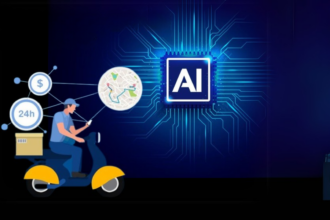Generative AI (Gen AI) is inescapable. Its sparkle emoji is emblazoned on everything from productivity software to refrigerators. Touting Gen AI as the next wave of technological innovation, capable of transforming industries and redefining how we interact with digital environments, companies have invested more than $1 trillion in its development and implementation. Now, they are looking for a return on their investment.
Supply chain leaders are not immune to this trend.
From visibility to timely deliverables, industry leaders are looking to leverage Gen AI to overcome performance challenges that are weighed down by SKU proliferation, new consumer channels, digitization, (de)globalization, regulation, legacy systems, disconnected processes, complex networks and misaligned KPIs.
They are also not late to the game.
Supply chain leaders have relied on artificial intelligence since the 2000s, trusting the technology to help with risk monitoring and sensing, route optimization, predictive maintenance and demand forecasting, efforts that have improved supply chain productivity and resilience.
Now, the sector is ready for another technological transformation, and supply chain entities that maximize their technological capabilities are significantly outpacing the competition, optimizing their processes more than twice as often as their low-performing counterparts.
However, there is a meaningful difference between hype and heft. With supply chain entities expected to spend more than $7 billion on the technology this year, actual results are needed to justify the expense.
What Can Gen AI Do for Supply Chains
Gen AI is as bad as it’s ever going to be. It’s also still very much in development and valuable right now.
Here’s how supply chain entities can leverage this technology to enhance supply chain visibility, enable better decision-making, and improve overall operational efficiency.
#1 Pattern Recognition
Supply chain entities are data-rich and insight-poor. Gen AI is solving this problem.
Gen AI recognizes patterns faster than humans, improving forecasting accuracy and making disparate or expansive data sets impactful as ensemble forecasting capabilities use Gen AI to identify and leverage complex patterns.
Supply chain entities can leverage this technology as a quick-use analytics tool for rapid data access and insights. For example, GenAI provides open-ended analytics to break out of the box of predefined analytics. Therefore, decision-makers can ask Gen AI solutions trained on a treasure trove of supply chain data:
● How is our business doing in a particular market or segment?
● Why are demands being dropped from my supply plan?
● How is the supply chain performance change year over year?
● Where is my forecast value added below the median?
● What events have been identified in the next three weeks impacting our top 5 customers?
In this way, Gen AI is making supply chain data more visible and actionable, allowing leaders to effectively sift through information to improve supply chain and organizational performance.
#2 Data Incorporation
Supply chain entities rely on an expansive network of data sources, including Enterprise Resource Planning (ERP) systems, Internet of Things (IoT) devices and sensors, Transportation Management Systems (TMS), Warehouse Management Systems (WMS) and Customer Relationship Management (CRM) systems to inform their operations and decision-making processes.
Gen AI allows supply chain entities to take data even further by incorporating non-traditional data, like events or external factors, into forecasting models. This “analytics on steroids” reality allows open-ended queries that go beyond predefined reports to empower supply chain leaders with more accurate and prescriptive data.
#3 Data Access
Gen AI democratizes data access and accelerates insight generation across organizations.
For instance, Gen AI can interpret and explain complex data in simpler terms, making it accessible to more people and breaking down barriers to data interpretability. As a result, data-driven insights are not just relegated to supply chain specialists. Marketing, operations and finance teams can access them across organizations to gain insights relevant to their specific tasks and responsibilities.
Put differently, Generative AI democratizes data by enabling the sharing of insights with a broader audience. It allows organizations to uncover and utilize valuable information more easily, enhancing their ability to react swiftly to changing conditions and make informed decisions.
#4 Real-Time Responses
Supply chain realities change quickly, and leaders need data as responsive as their environment.
Gen AI is making that possible, allowing natural language queries, scenario modeling and dynamic decision-making to be more impactful. This means decision-makers can access real-time responses to questions during meetings and working sessions, so the best information is always just a search away.
Transforming Supply Chains Right Now
Gen AI is just starting, but its improving supply chain starting with visibility, and continuing through every stage of operations. To maximize its potential, deploy solutions steadily and strategically. Invest in prompt management and training, understand the guard rails in place, play within the happy path, and venture out when necessary.
At the same time, supply chain entities should prepare their teams to maximize Gen AI’s implementation by providing intentional training, hands-on learning, and experimentation opportunities. In everything, focus on implementing AI solutions that provide real value and enhance the capabilities of your team.







